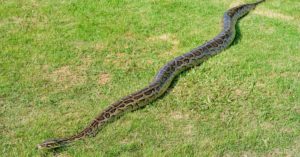Lake Harris, located 31 miles northwest of Orlando, Florida, is surrounded by numerous public parks providing access to miles of beautiful shoreline. Fishing is the most popular activity on the lake and is regulated by the Florida Fish and Wildlife Conservation Commission. Lake Harris also offers boating kayaking, and picnicking opportunities, but what about alligators? Do they live here? If so, what is their number and behavior in this ecosystem?
About Lake Harris
Lake Harris is the largest lake in Lake County and part of the Harris Chain of Lakes. It covers approximately 13,788 acres and is 12 miles long, 62 feet deep, and 5 miles wide. The lake is home to a variety of fish, including largemouth bass, channel catfish, bluegill, and crappie. It is also a popular destination for boaters, anglers, and other outdoor enthusiasts due to its proximity to the city of Leesburg, Florida.
The lake has a rich history and was once home to the Seminole and Creek Indians. It was also used during the Seminole Wars as a refuge for the Native Americans. The lake has also been used for commercial and recreational purposes, with several resorts located along its shoreline.
Are There Alligators in Lake Harris?
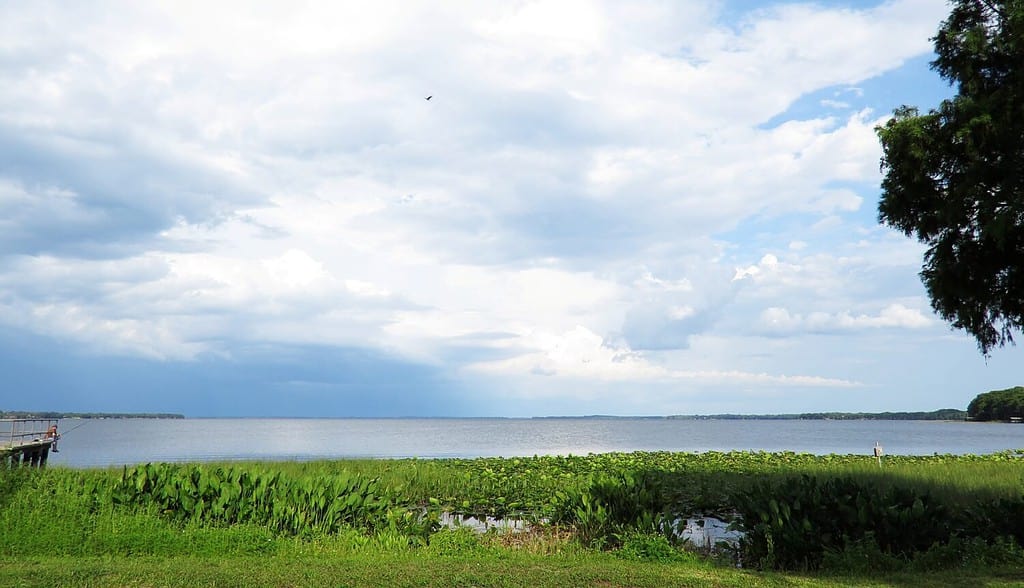
There are definitely alligators in Lake Harris, Florida.
©Roger Epps/Shutterstock.com
Yes. There are alligators in Lake Harris. 750 alligators, approximately! In the entire chain of lakes, there are an estimated 1,200 alligators. This is the primary reason that swimming is not a popular activity at Lake Harris. It is not safe to swim with alligators.
Human observers can often tell when alligators are around due to their typical behavior. These signs may include big indentations or scratches in the ground and trails of mud where the alligators returned to the water.
Do All Lakes in Florida Have Alligators?
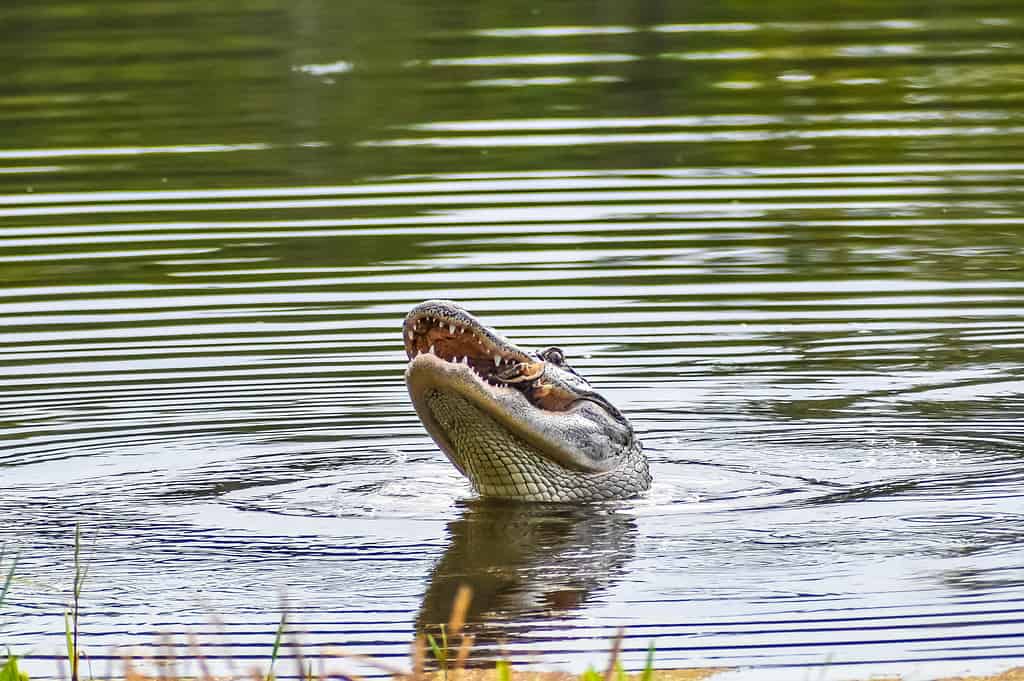
Nearly every body of water in Florida is home to some number of alligators.
©Jaimie Tuchman/iStock / Getty Images Plus via Getty Images
Florida, the Sunshine State, is the home of a vast alligator population, with an estimated 1.25 million living in the state and another 5 million spread throughout the southeastern U.S. Alligators can be found in any body of water in Florida — from marshes and swamps to rivers and lakes — and are present in all 67 counties. Every natural lake in Florida is populated by alligators and snakes, typically with murky water that helps them to ambush their prey.
Do Alligators in Lake Harris Attack Humans?
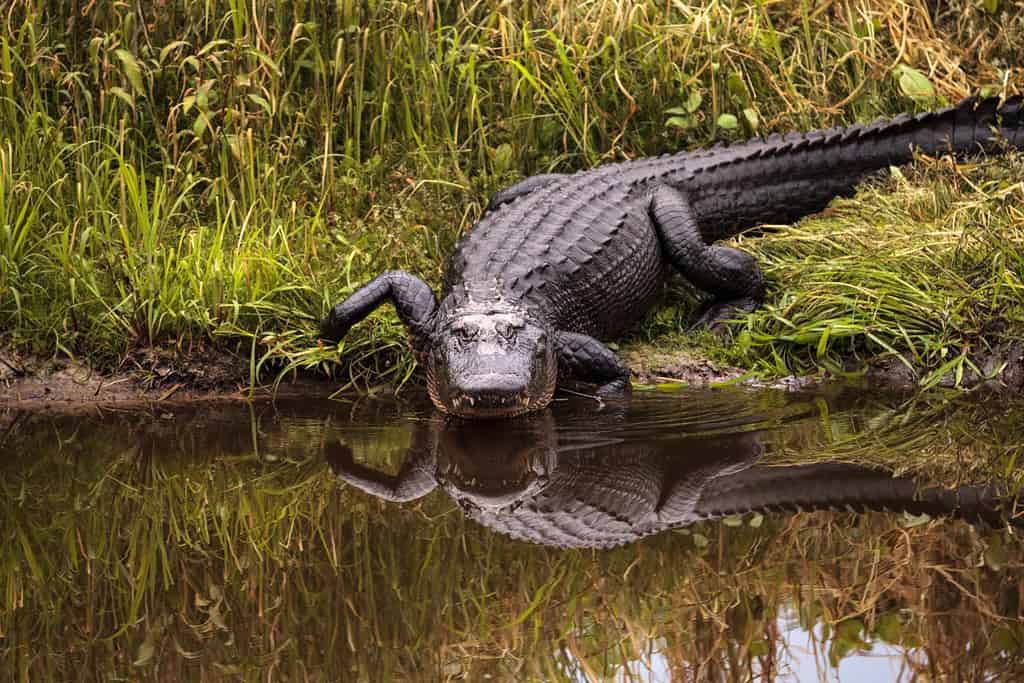
Even though there are alligators in Lake Harris, Florida, alligator attacks or bites are exceedingly rare.
©SunflowerMomma/Shutterstock.com
The FWC reported in November 2021 that there had been a total of seven major and three minor alligator bites in Florida in 2021 and zero fatalities. In fact, there has not been an alligator-caused fatality in Florida since 2019. In the last four years, the average number of alligator-related deaths is less than one per year.
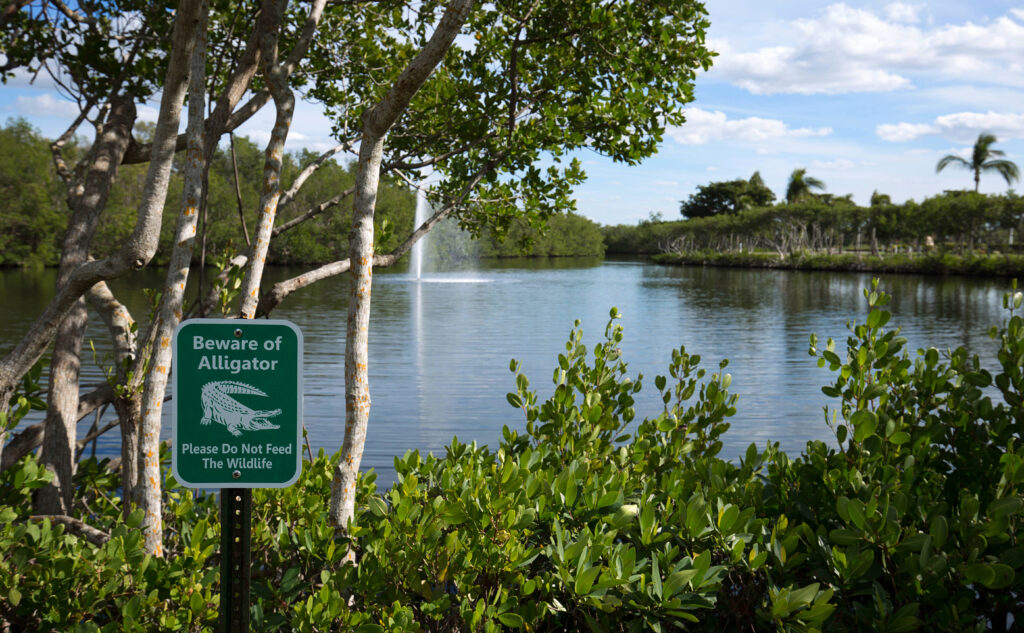
Florida is the perfect climate for alligators to thrive. Most Floridians know how to avoid alligators safely.
©Jillian Cain Photography/Shutterstock.com
What Do Alligators in Lake Harris Eat?
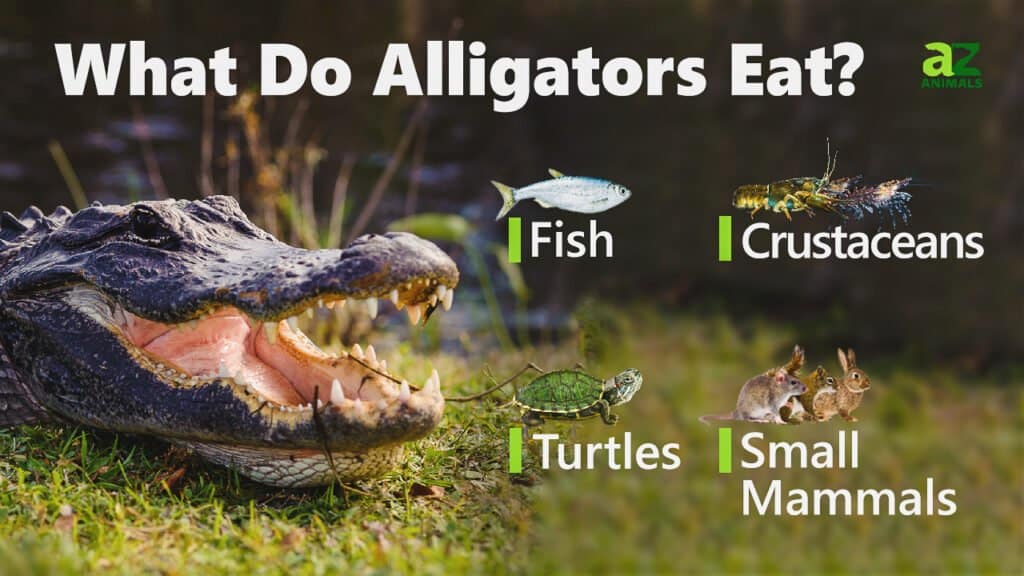
Alligators in lakes in Florida are apex predators, meaning they sit atop the food chain and consume whatever they can find. Their diet primarily consists of fish, turtles, snakes, small mammals, and birds. They also eat carrion, which is a dead animal or plant material, as well as aquatic vegetation.
Alligators use their powerful jaws to seize their prey and then use their sharp teeth to tear it apart. They tend to ambush their prey, waiting in the water and then quickly attacking when their prey is close enough. While some alligators may hunt during the day, others may wait until nightfall to increase their chances of successfully catching prey.
Alligators are opportunistic feeders, meaning they will consume whatever they can find or catch. They will also actively search for food, such as foraging in the vegetation around the lake or even digging in mud for small prey. Alligators are also known to eat crustaceans, amphibians, and mollusks.
Other Wildlife Around Lake Harris
There are not only alligators in Lake Harris. Many different kinds of animals make their homes in and around the lake. Here are a few of our favorites!
Egret

Egrets are arguably one of the most beautiful birds in Florida.
©Harry Collins Photography/Shutterstock.com
The egret is a long-legged, white bird with a slender, S-shaped neck. It has a long, slender yellow bill, and its eyes are yellow as well. The egret is a wading bird, usually found in wetlands, such as marshes, estuaries, and shallow lakes. It feeds on a variety of aquatic prey, including frogs, fish, and insects. The egret is a graceful bird, and its presence in a wetland is a sign of a healthy ecosystem.
Coot
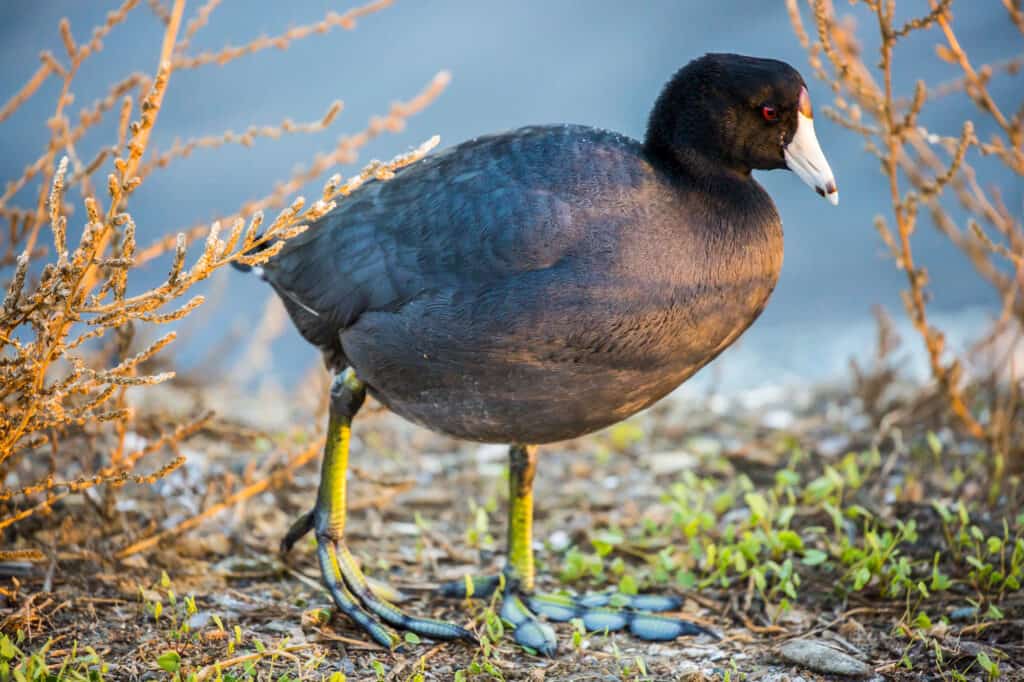
American coots are water birds that eat aquatic insects and invertebrates.
©yhelfman/Shutterstock.com
Coots are small, black aquatic birds with bright white bills and feet. They are found in wetlands and shallow lakes and feed on aquatic invertebrates, such as snails, worms, and aquatic insects. Coots are gregarious birds and often flock together in groups of up to hundreds of individuals. They are also good swimmers and are able to dive beneath the surface to feed.
Osprey

Because fish is their favorite food, ospreys often live next to lakes in Florida.
©BlueBarronPhoto/Shutterstock.com
The osprey is a large, brown, and white bird of prey with a wingspan of up to six feet. It lives near large bodies of water and feeds primarily on fish. The osprey is easily recognizable due to its distinctive white head and dark brown body. It is an expert flyer and can be seen soaring high in the sky, often hovering in the air before plunging into the water to catch its prey.
Wood Duck
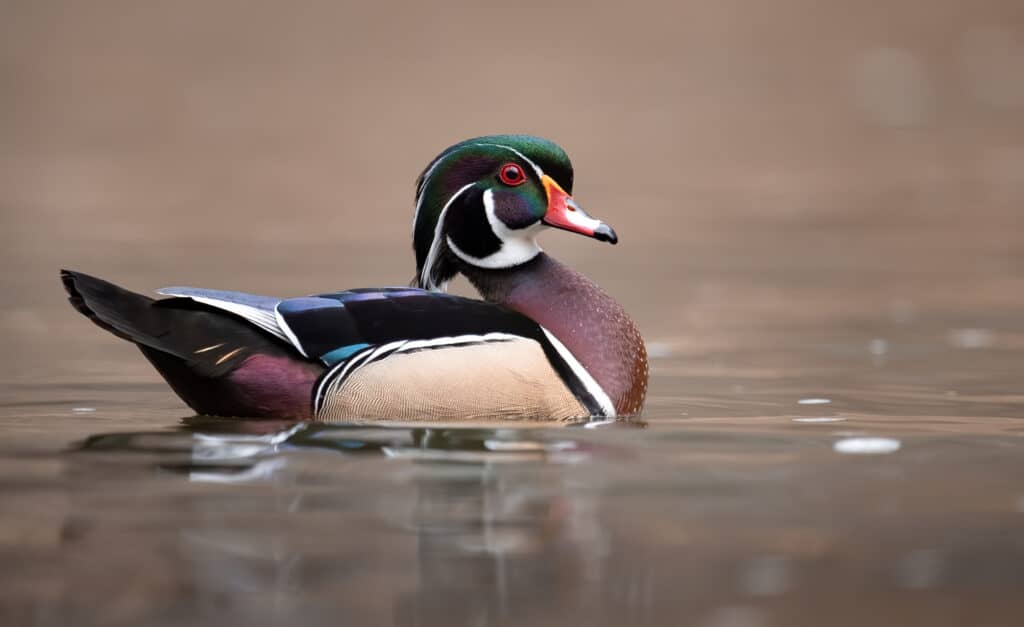
Wood ducks are very photogenic birds that live in Lake Harris, Florida.
©Harry Collins Photography/Shutterstock.com
The wood duck is a medium-sized waterfowl with a colorful plumage of brown, white, and iridescent blues and greens. It makes its home in wooded wetlands and streams and feeds on a variety of aquatic insects, frogs, and seeds. Wood ducks are also known for their elaborate courtship displays, which involve elaborate vocalizations and posturing.
Brown Water Snake
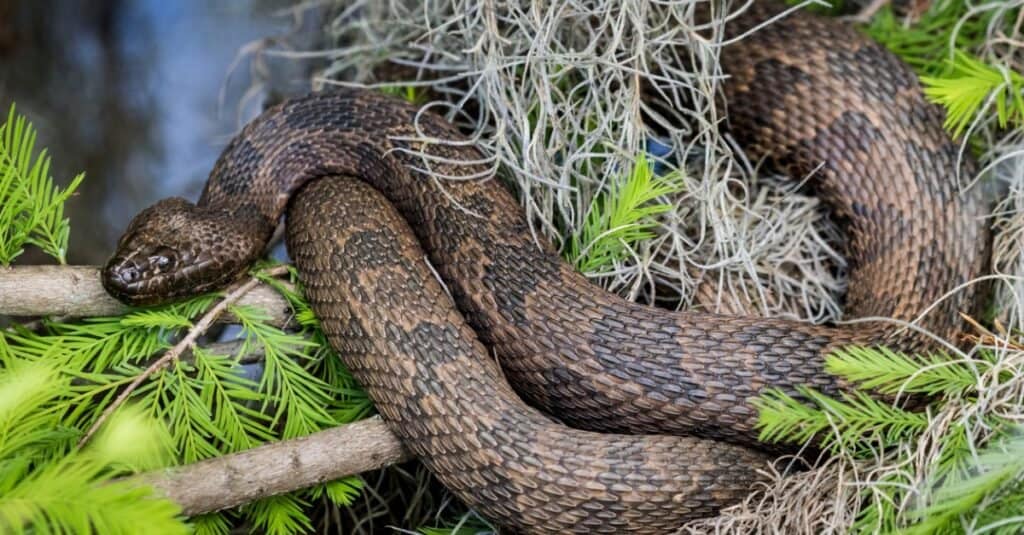
Because it is non-venomous, the brown water snake is no danger to humans.
©iStock.com/csraphotography
The brown water snake is a non-venomous species found in freshwater habitats across North America. It is olive to dark brown in color and can grow up to four feet in length. The brown water snake feeds on a variety of aquatic prey, such as frogs, fish, and crayfish. It is a good swimmer and is often seen basking on logs or rocks near the water’s edge.
American Bullfrog
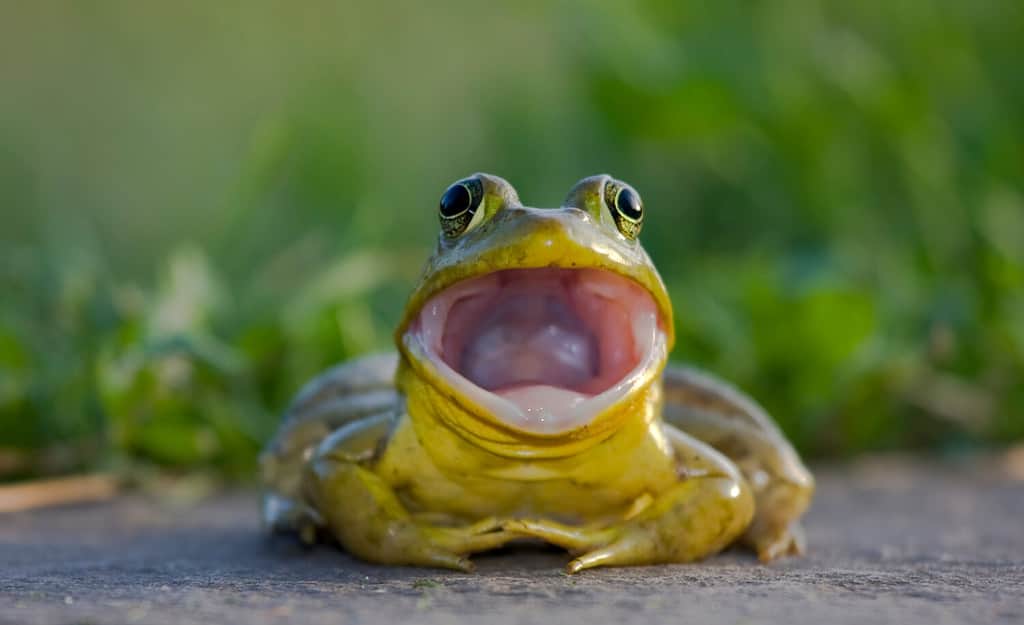
Because there are alligators in Lake Harris, bullfrogs have to be careful not to become prey.
©Tau5/Shutterstock.com
The American bullfrog is a large species of frog that lives in Lake Harris, Florida. It has a distinctive green body with dark spots and a yellowish-brown underside. Its legs are long and muscular, and its toes are webbed. The American Bullfrog is an important predator in aquatic ecosystems, and it feeds on a variety of small aquatic animals, such as insects, worms, and small fish. It is an important species for the food web, as it helps to keep populations of other animals in check, and it also serves as prey for larger predators.
Green Tree Frog
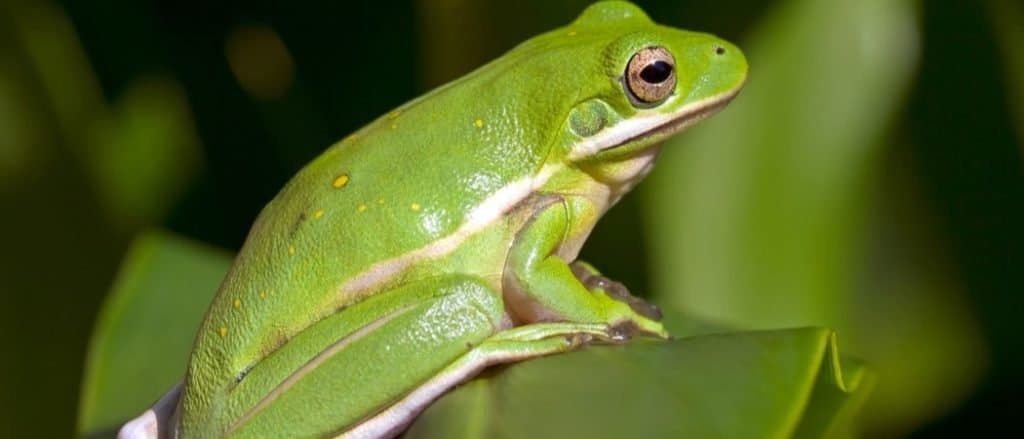
Hyla cinerea is a type of green
tree frog
that lives in Florida.
©LorraineHudgins/Shutterstock.com
The green tree frog is a small species of frog found throughout much of the southeastern United States, including Florida lakes. It is primarily green in color, but its belly is usually white or yellowish. It has a rounded body and long, slim legs. The green tree frog is an omnivorous species but eats mostly flies, ants, crickets, and worms.
Florida Softshell Turtle
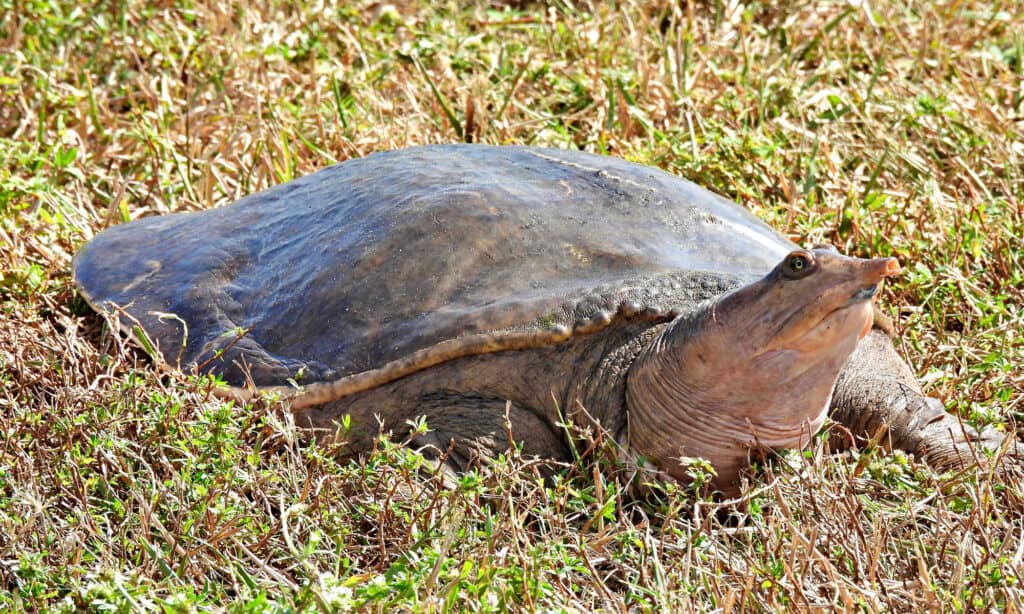
The alligators in Lake Harris eat reptiles, like this Florida softshell turtle.
©iStock.com/passion4nature
The Florida softshell turtle is a large species of turtle that thrives in Lake Harris. It has a large, flattened shell with a leathery texture and a mottled gray or brown coloration. Its head, neck, and legs are long and slender, and its toes are webbed. The Florida softshell turtle eats insects, mollusks, crustaceans, and other meats.
The photo featured at the top of this post is © Sunny Sherer/Shutterstock.com
Thank you for reading! Have some feedback for us? Contact the AZ Animals editorial team.





